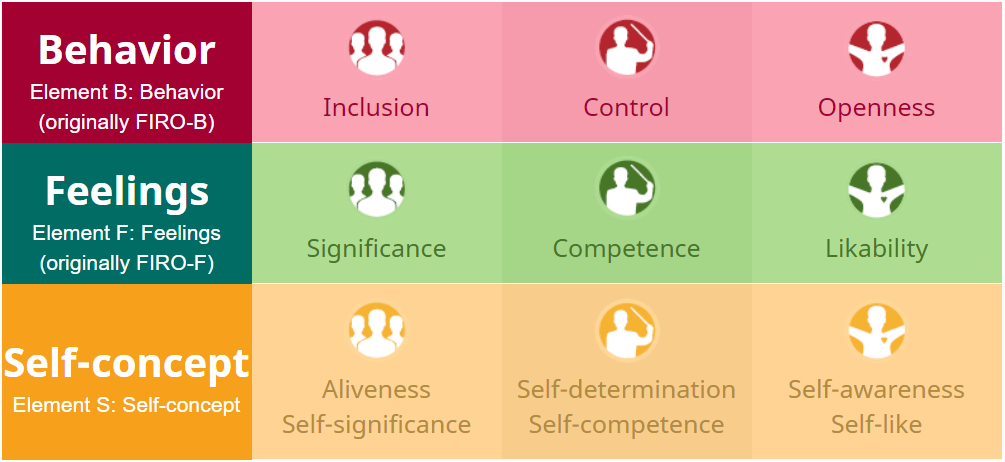Theoretical Backbone for the Change
The Human Element is a detailed and coherent application of the FIRO (Fundamental Interpersonal Relations Orientation) theory developed by Dr. Will Schutz.
FIRO theory was introduced in 1958 in the book FIRO: A Three-Dimensional Theory of Interpersonal Behavior and was originally designed to measure and predict the interaction between people for the purpose of gathering highly productive teams.
FIRO offers a scientific lens through which people can gain a clearer perspective and understanding of the dynamics of human behavior. This view enables individuals to gain increased knowledge, awareness and compassion for themselves and others, work better with others in teams and organization, and to achieve higher levels of satisfaction.

Briefly stated FIRO theory identifies three basic needs that all human beings share: the need to feel significant, competent and likable. When people interact with each other, they seek the right amount of inclusion, control and openness so that they can feel good about themselves. FIRO theory creates understanding of those needs by putting them into three basic levels that interact with one another. These are: Behavior, Feelings, and Self-Concept. FIRO also clearly shows that Self-Concept drives Feelings, that Feelings drive Behavior, and that Behavior drives results.
FIRO theory provides the foundation for understanding how to develop sustainable, high-trust, and collaborative relationships in organization by understanding the key factor that lies in all of them, the individual.